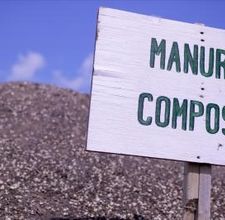C. Claiborne Ray of the New York Times asks, when a virulent strain of E. coli from manure contaminates produce, how do farmers clean the soil in their fields?
“Farmers commonly rely on environmental conditions over time to inactivate the pathogenic E. coli,” said Randy W. Worobo, associate professor of food microbiology at Cornell University.
The disease-causing bacteria may come from the feces of deer, sheep, cattle or other warm-blooded mammals, including humans, Dr. Worobo said. Generic E. coli are normal inhabitants of the lower intestine. Pathogenic forms have acquired virulence genes that  produce substances like enterotoxins, which cause intestinal illness, and adhesins, which allow for binding to intestinal cells in the hosts.
produce substances like enterotoxins, which cause intestinal illness, and adhesins, which allow for binding to intestinal cells in the hosts.
“It is not a common contaminant of fecal material,” Dr. Worobo said, “but if the host becomes infected with a pathogenic E. coli strain, it can cause illness in the host and be shed in the fecal material along with generic nonpathogenic E. coli.”
Over time, the pathogenic E. coli are inactivated by exposure to the sun; desiccation; poor nutrient conditions; temperature extremes; and competing soil microbes. To hasten the die-off, farmers may turn the soil, evenly distributing the microbes and making sure they are exposed to these conditions.
To keep the microbes out of land used for food production, Dr. Worobo said, farmers rely on animal barriers and specific practices for handling compost and manure.
